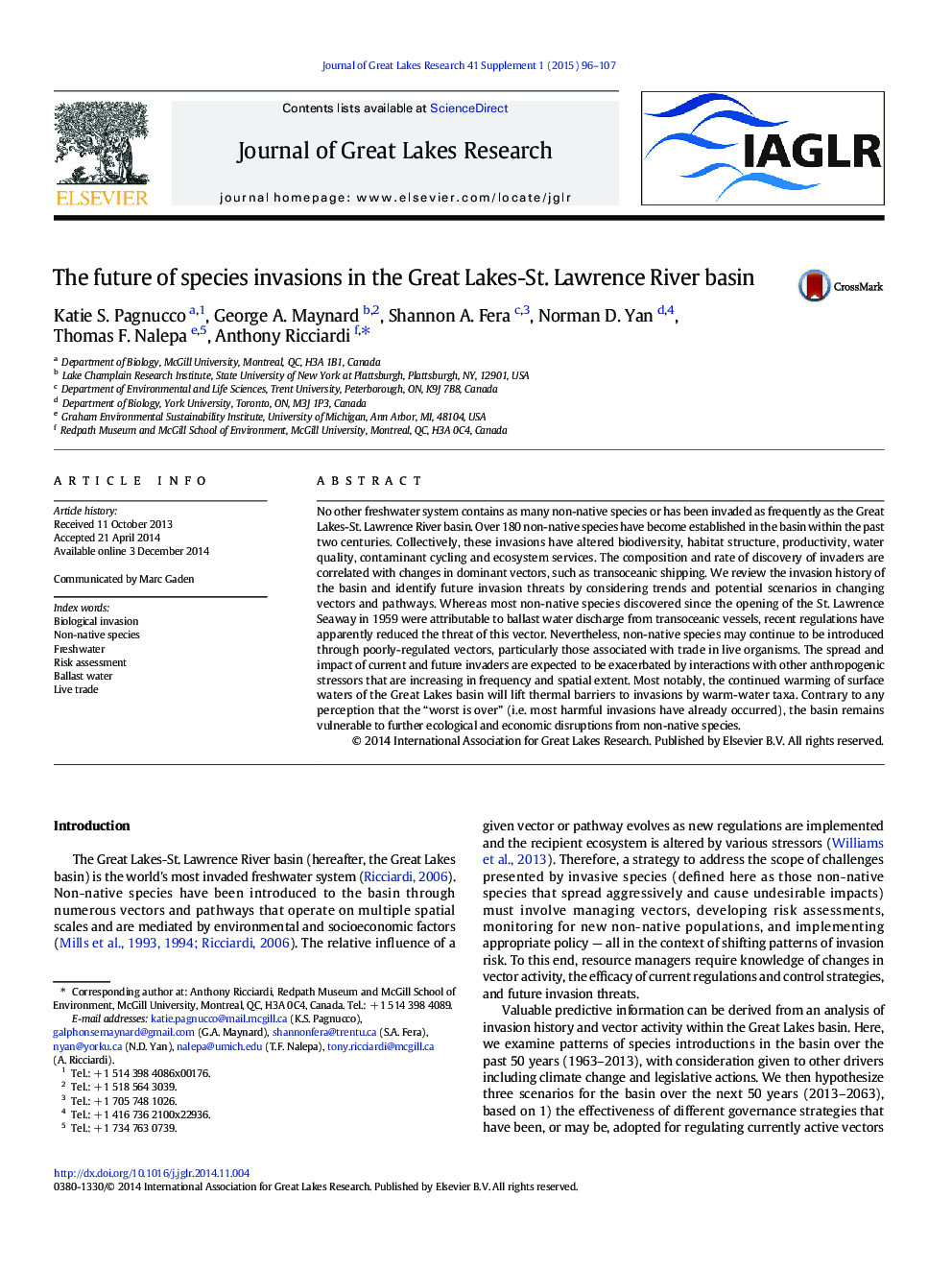| کد مقاله | کد نشریه | سال انتشار | مقاله انگلیسی | نسخه تمام متن |
|---|---|---|---|---|
| 4398317 | 1306681 | 2015 | 12 صفحه PDF | دانلود رایگان |
• We identify trends in invasion vectors and predict future invaders of the Great Lakes basin.
• Live trade will eclipse ballast water as the dominant vector of future invaders.
• Invasions and impacts will be magnified by interactions with other stressors.
• The Great Lakes basin remains at risk of further disruption from invasive species.
No other freshwater system contains as many non-native species or has been invaded as frequently as the Great Lakes-St. Lawrence River basin. Over 180 non-native species have become established in the basin within the past two centuries. Collectively, these invasions have altered biodiversity, habitat structure, productivity, water quality, contaminant cycling and ecosystem services. The composition and rate of discovery of invaders are correlated with changes in dominant vectors, such as transoceanic shipping. We review the invasion history of the basin and identify future invasion threats by considering trends and potential scenarios in changing vectors and pathways. Whereas most non-native species discovered since the opening of the St. Lawrence Seaway in 1959 were attributable to ballast water discharge from transoceanic vessels, recent regulations have apparently reduced the threat of this vector. Nevertheless, non-native species may continue to be introduced through poorly-regulated vectors, particularly those associated with trade in live organisms. The spread and impact of current and future invaders are expected to be exacerbated by interactions with other anthropogenic stressors that are increasing in frequency and spatial extent. Most notably, the continued warming of surface waters of the Great Lakes basin will lift thermal barriers to invasions by warm-water taxa. Contrary to any perception that the “worst is over” (i.e. most harmful invasions have already occurred), the basin remains vulnerable to further ecological and economic disruptions from non-native species.
Journal: Journal of Great Lakes Research - Volume 41, Supplement 1, 2015, Pages 96–107
